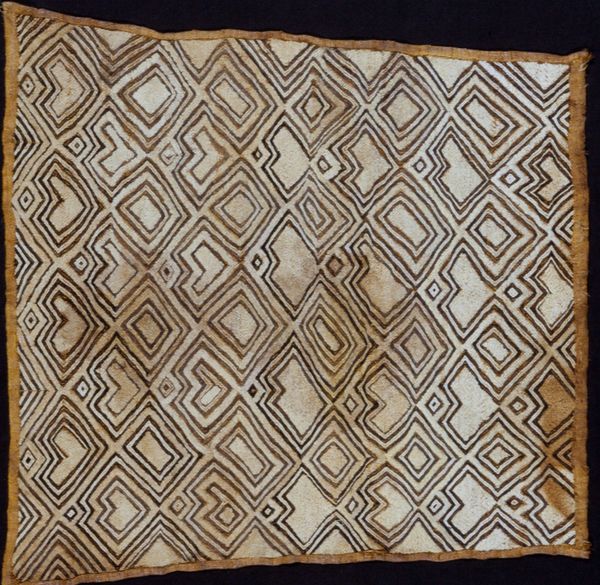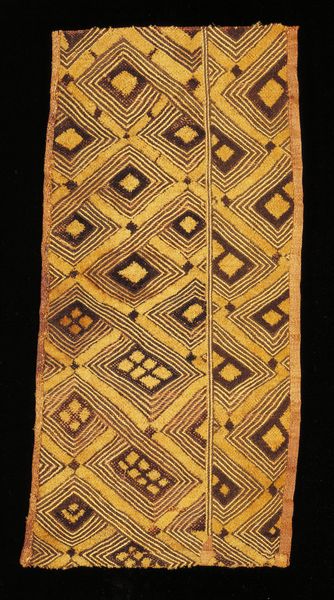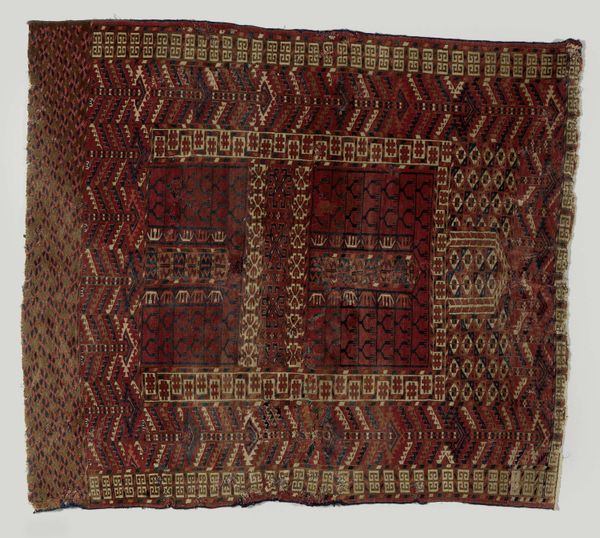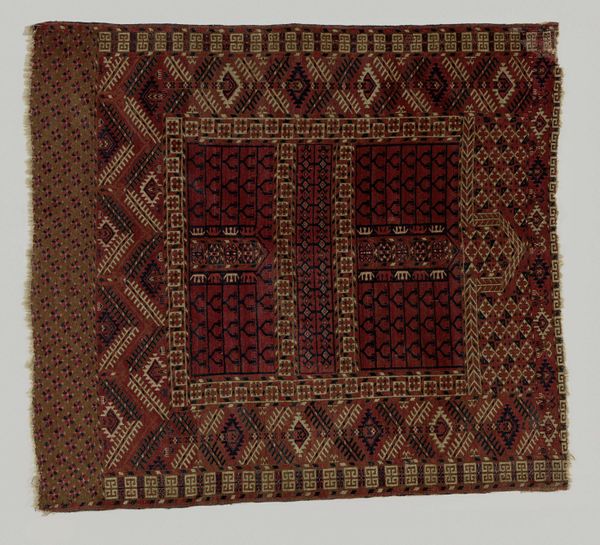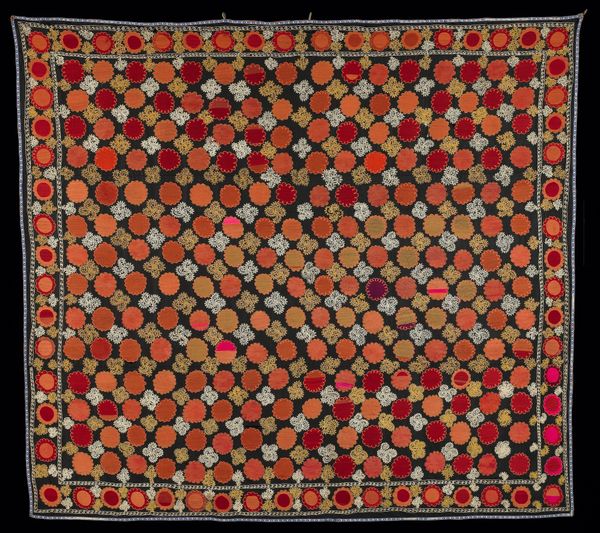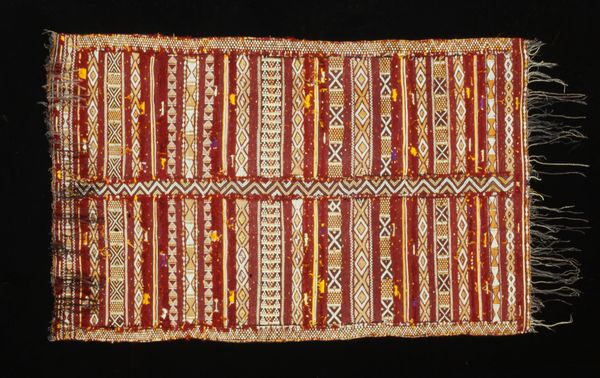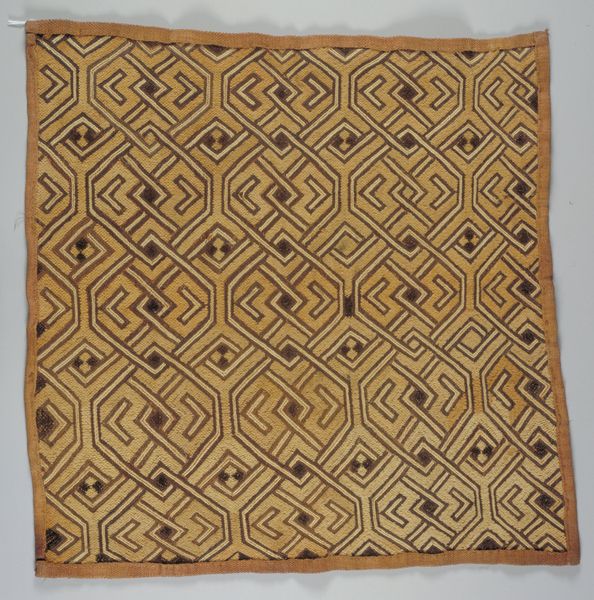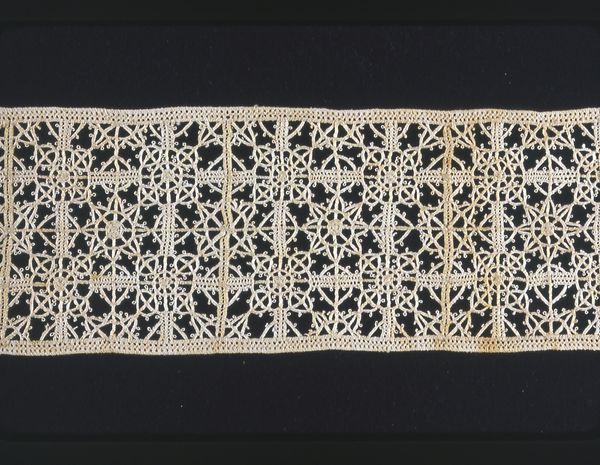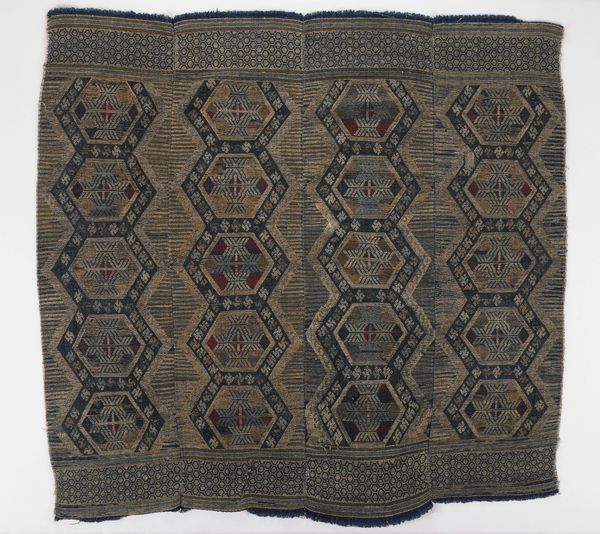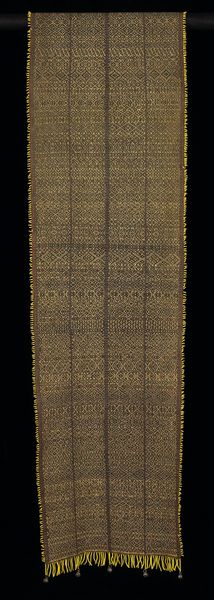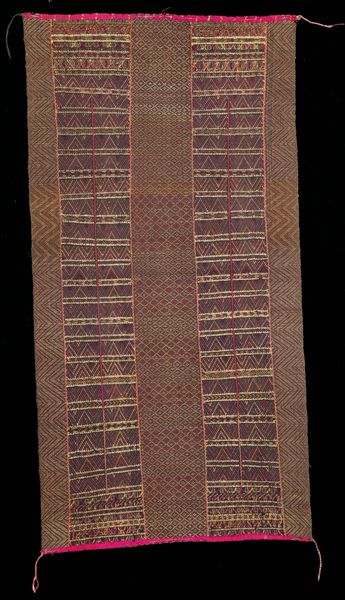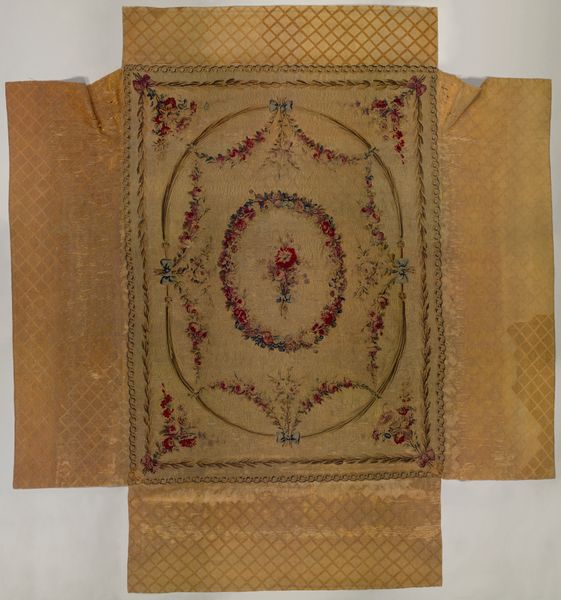
fibre-art, weaving, textile
#
fibre-art
#
weaving
#
textile
#
geometric pattern
#
geometric
Dimensions: 23 x 11 3/4 in. (58.4 x 29.8 cm)
Copyright: Public Domain
This woven panel was created by a Kuba artist in the Democratic Republic of Congo. The Kuba Kingdom, flourishing from the 17th to 19th centuries, was renowned for its sophisticated artistry. The Kuba people, an amalgamation of various ethnic groups, developed a complex social hierarchy where art played a crucial role. Textiles like this one were not merely decorative; they served as markers of status, identity, and historical memory. The geometric patterns, seemingly abstract, carry symbolic meanings, referencing Kuba cosmology, social structures, and historical narratives. Such textiles were often created by women, underscoring their significant role in Kuba society. The process of weaving and embellishing these panels was time-intensive, demanding skill and patience. Passed down through generations, it embodies the cultural knowledge and artistic innovation within the Kuba Kingdom. The panel transcends the distinction between art and everyday life.
Comments
minneapolisinstituteofart almost 2 years ago
⋮
Finely worked cut-pile embroideries are objects of great prestige in Kuba society. The production of these embroideries is a highly specialized collaborative effort between men and women. Kuba men set up the looms and weave the raffia cloth that provides the base for the decorative elements. The most prestigious form of decoration, cut-pile embroidery, is worked only by women who develop great skill at this time- and labor-intensive art form. The finest cut-pile embroideries, as in these examples, combine a flat stem stitch with a tufted plush stitch, resulting in a distinct texture that enhances the overall design of the piece. Patterns used for embroidery are drawn from over 200 traditional designs which are also used for wood carving, basketry, and ceramics. Kuba artists do not replicate designs exactly, but rather use them as a basis for improvisational experimentation in surface ornamentation.
Join the conversation
Join millions of artists and users on Artera today and experience the ultimate creative platform.
